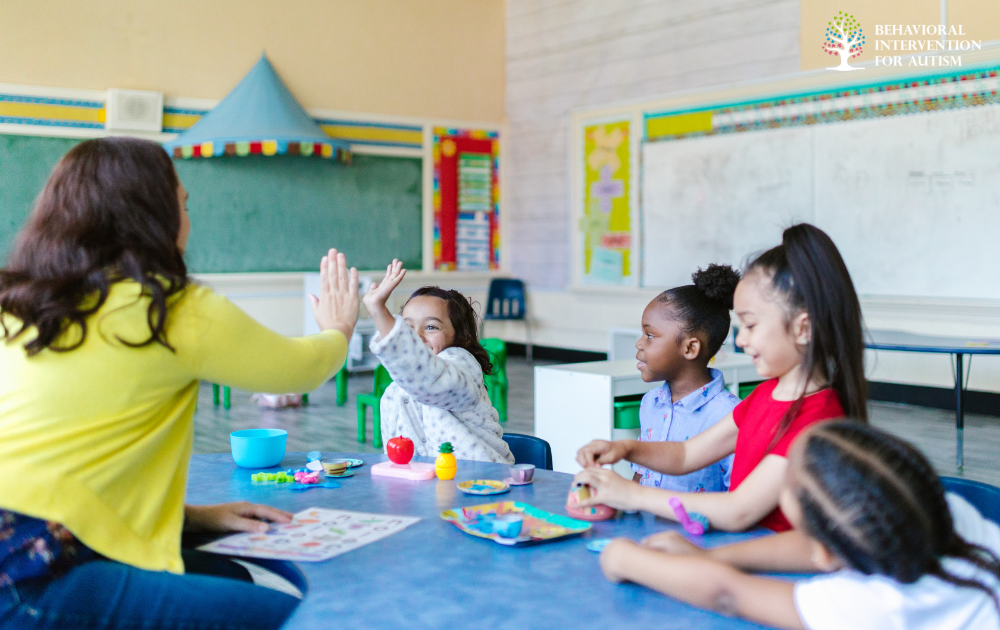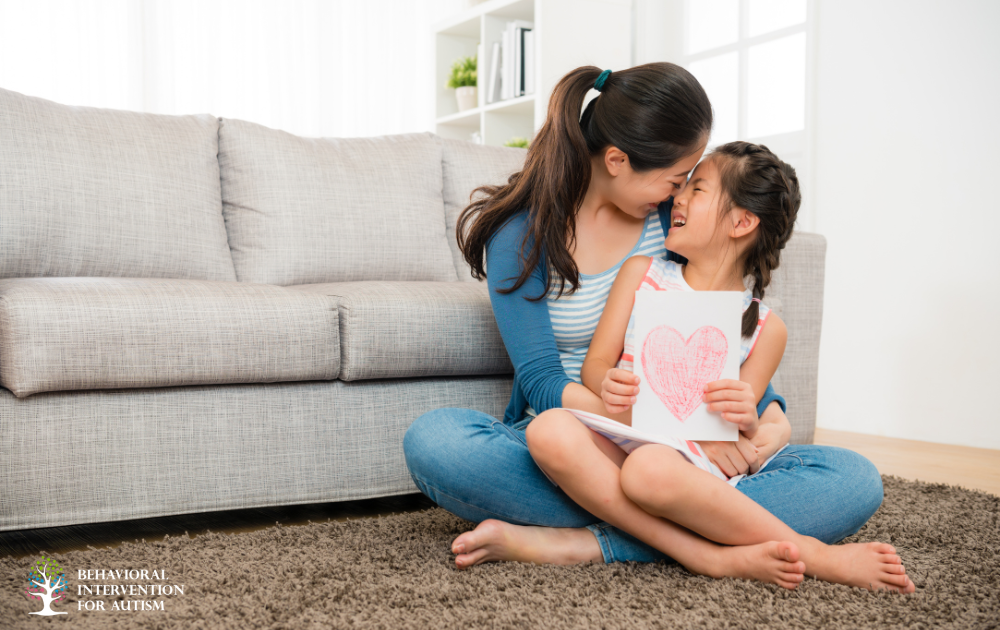
Table of Contents
Bringing ABA therapy into the home environment offers children with autism a vital opportunity to learn and grow within their own familiar surroundings. This personalized approach integrates Applied Behavior Analysis techniques seamlessly into daily routines, empowering families to actively engage in their child’s developmental journey. By fostering a supportive and consistent home-based setting, this method not only promotes skill acquisition but also enhances overall well-being, fostering meaningful progress and familial collaboration.
Introduction to ABA Therapy
ABA therapy is a comprehensive approach that addresses various areas of development, including language and communication, social skills, cognitive skills, and adaptive behaviors. It is based on the principles of learning theory, which emphasize the importance of positive reinforcement and systematic teaching techniques.
ABA therapy is designed to be highly individualized, taking into account the unique strengths and challenges of each individual. It involves an initial evaluation to assess the individual’s skills and challenges, followed by the development of a personalized treatment plan that targets specific goals and objectives.
Benefits of ABA Therapy
ABA therapy offers numerous benefits for individuals with autism and other developmental disorders. Some of the key benefits include:
ABA therapy is a highly individualized and effective treatment approach for individuals with autism. It offers a range of benefits, including targeted interventions, personalized treatment plans, and the flexibility to integrate therapy into daily routines. With the support of trained professionals, individuals with autism can make significant progress in their development and overall well-being.
Personalized ABA Therapy Plans
In ABA therapy, a personalized approach is essential for supporting the unique needs and goals of each individual. This section delves into the evaluation process, goal setting, and the significance of customized learning approaches within ABA therapy.
Evaluation and Goal Setting
Before beginning ABA therapy, a comprehensive evaluation is conducted by qualified professionals. During this evaluation, therapists assess the child’s skills and challenges across various domains, such as communication, social interaction, and behavior. This evaluation helps in identifying specific areas where the child may need support and sets the foundation for creating a personalized ABA therapy plan.
Goal setting is an integral part of ABA therapy. Based on the evaluation, specific goals are established to address the individual needs of the child. These goals are measurable and designed to promote progress and development in various areas of functioning. By setting achievable goals, therapists and parents can track the child’s progress and celebrate milestones along the way. It’s important to remember that goals may evolve and be adjusted as the child progresses through their ABA therapy journey.
Tailored Learning Approaches
ABA therapy utilizes a range of techniques and strategies to promote learning and skill development. These approaches are tailored to meet the unique needs of each child. One-size-fits-all approaches are ineffective in ABA therapy, as every individual with autism is different and requires personalized attention.
Tailored learning approaches involve breaking down complex skills into smaller, manageable steps. This allows the child to learn and master each step before moving on to the next. By using this systematic approach, therapists can ensure that the child is building a strong foundation of skills and concepts.
ABA therapy at home also emphasizes the importance of consistency. Consistency in implementing therapy techniques and strategies across different environments, such as home and school, helps the child generalize the skills they learn. This means that the child can apply the skills they acquire in therapy sessions to real-life situations and settings.
By personalizing ABA therapy plans, therapists can address the specific needs and goals of each child. This individualized approach helps maximize the effectiveness of the therapy and promotes meaningful progress. With appropriate guidance and resources, parents can also play a crucial role in implementing aspects of ABA therapy at home, further enhancing the child’s learning and development. For more information on specific ABA therapy techniques, you can refer to our article on ABA speech therapy techniques.
ABA Therapy Implementation
When it comes to implementing ABA therapy, there are important considerations to keep in mind, including therapist qualifications and the choice between clinical and home settings.
Therapist Qualifications
ABA therapy is an intensive program that is typically conducted by therapists who are certified by the Behavior Analyst Certification Board (BACB). These therapists, often referred to as Board Certified Behavior Analysts (BCBAs), have undergone formal education and training in psychology and behavioral analysis. Their expertise in the field allows them to assess the skills and challenges of individuals with autism and develop personalized therapy plans tailored to their specific goals and learning capabilities.
The qualifications of the ABA therapist are crucial in ensuring the effectiveness of the therapy. Parents and caregivers should seek therapists who are accredited by the BACB and have experience working with individuals on the autism spectrum. It is also important to establish open and clear communication with the therapist to ensure that therapy goals align with the needs and aspirations of the child.
Clinical vs. Home Settings
ABA therapy activities can be conducted in both clinical settings and at home, each with its own advantages. Clinical settings provide a structured environment where therapists have access to a variety of resources and tools to facilitate the therapy process. These settings often offer a wide range of specialized equipment and materials specifically designed for ABA therapy.
On the other hand, ABA therapy at home allows for greater flexibility in scheduling and can be seamlessly integrated into the child’s daily routines without causing disruption. Home-based therapy also maximizes family involvement, as parents and caregivers can actively participate in the therapy process and reinforce learned skills in familiar surroundings. Moreover, by implementing ABA therapy in the home environment, children with autism have the opportunity to generalize newly acquired skills more effectively to real-life situations and settings.
The choice between clinical and home settings ultimately depends on the specific needs and preferences of the child and their family. Some families may find that a combination of both settings works best for their child, as it allows for a comprehensive approach to therapy. It is important to consult with the ABA therapist to determine the most suitable setting based on the child’s individual needs and goals.
By understanding the qualifications of ABA therapists and considering the benefits of different therapy settings, parents and caregivers can make informed decisions regarding the implementation of ABA therapy for their child. The collaboration between therapists, parents, and caregivers plays a vital role in maximizing the effectiveness of ABA therapy and supporting the progress and development of individuals with autism.
ABA Therapy Activities at Home
ABA therapy activities can be enjoyed both in clinical settings and at home, offering fun and innovative ways to engage and teach children with autism. Implementing ABA therapy at home allows for greater flexibility in scheduling, integrates therapy into daily routines without disruption, maximizes family involvement, and enables children with autism to generalize newly acquired skills effectively to real-life situations and settings. It promotes a personalized and holistic approach to treatment tailored to the child’s specific needs and preferences.
Engaging Home-Based Activities
Engaging in ABA therapy activities at home provides an opportunity for parents and caregivers to actively participate in their child’s treatment. Incorporating structured activities and play into daily routines can help reinforce and generalize skills learned during therapy sessions. Here are some examples of engaging home-based activities for ABA therapy:
- Daily Life Skills: Encourage independence by involving your child in age-appropriate daily life activities such as dressing, brushing teeth, or preparing meals. Break down the tasks into smaller steps and provide visual supports or prompts to assist your child in completing them.
- Structured Play: Engage in structured play activities that target specific skills, such as turn-taking, sharing, or following instructions. Use toys and games that align with your child’s interests and abilities. Incorporate visual schedules or social stories to enhance understanding and communication.
- Pretend Play: Encourage imaginative play where your child can act out different scenarios or roles. This helps develop creativity, social skills, and problem-solving abilities. Join in the play and provide opportunities for your child to practice language and social interactions.
- Sensory Activities: Create a sensory-rich environment by engaging your child in sensory activities that stimulate different senses. This can include activities such as playing with sensory bins, finger painting, or exploring different textures. Sensory activities can help with self-regulation, attention, and sensory processing.
- Visual Supports: Utilize visual supports such as visual schedules, visual timers, or visual cues to aid in communication and understanding. Visual supports can enhance comprehension and reduce anxiety by providing clear expectations and structure.
Remember, it’s important to tailor the activities to your child’s individual needs and preferences. Observe their interests and strengths to create a positive and engaging environment for learning and growth.
Importance of Consistency
Consistency is key when implementing ABA therapy at home. Regular and predictable routines help children with autism feel secure and confident. By incorporating therapy activities into daily life, you can provide consistent opportunities for learning and skill development. Here are some reasons why consistency is important:
- Generalization of Skills: Consistently practicing skills in different settings and situations helps children generalize and apply what they have learned during therapy to real-life experiences. This promotes the transfer of skills and increases their functional independence.
- Reinforcement of Learning: Consistent reinforcement and repetition of learned skills strengthen neural pathways, making it easier for children to recall and utilize those skills in various contexts. By consistently reinforcing desired behaviors and providing positive feedback, you can help solidify their learning.
- Establishing Expectations: Consistent routines and expectations provide structure and predictability for children with autism. Knowing what to expect in different situations reduces anxiety and promotes a sense of security and understanding.
- Building Trust and Rapport: Consistency in implementing ABA therapy activities at home helps build trust and rapport between the child and their caregivers. When children see that their caregivers are committed and consistent in their efforts, it enhances their willingness to engage and learn.
It’s important to collaborate with ABA professionals, such as Board Certified Behavioral Analysts (BCBAs), to develop an individualized plan that can be implemented consistently at home. Regular communication with therapists ensures that goals and strategies align between therapy sessions and home activities.
By engaging in a variety of stimulating activities and maintaining consistency, parents and caregivers can create an optimal environment for their child’s growth and development through ABA therapy at home.
ABA Therapy Techniques
When it comes to implementing ABA therapy at home, understanding the techniques used in this therapy can be highly beneficial. Two key techniques used in ABA therapy are positive and negative reinforcement, as well as the ABC approach.
Positive and Negative Reinforcement
Positive and negative reinforcement are fundamental concepts in ABA therapy. These techniques involve using consequences to strengthen or weaken certain behaviors. Positive reinforcement involves providing a reward or praise immediately after a desired behavior is displayed. This increases the likelihood of that behavior being repeated in the future.
For example, if a child with autism successfully completes a task or follows an instruction, they may receive praise, a sticker, or a small treat as a positive reinforcer. This encourages them to continue exhibiting the desired behavior.
On the other hand, negative reinforcement involves the removal of an aversive stimulus to reinforce a behavior. By removing an unpleasant or unwanted experience or item, the likelihood of the desired behavior recurring increases. It’s important to note that negative reinforcement should not be confused with punishment, as ABA therapy does not involve punishment techniques.
ABC Approach in ABA Therapy
The ABC approach is a fundamental framework used in ABA therapy to analyze and modify behaviors. ABC stands for Antecedent, Behavior, and Consequence. This approach helps identify the triggers and consequences that influence behavior, allowing caregivers and therapists to implement effective interventions.
- Antecedent: The antecedent refers to the events or circumstances that occur before a behavior takes place. By understanding the antecedents, caregivers and therapists can identify patterns and potential triggers for certain behaviors.
- Behavior: The behavior refers to the specific action or response exhibited by the individual. It is important to observe and record the behavior accurately to understand its frequency, duration, and intensity.
- Consequence: The consequence refers to the events or stimuli that follow a behavior. It can either reinforce or discourage certain behaviors. By analyzing the consequences, therapists and caregivers can determine whether they are reinforcing the desired behavior or inadvertently reinforcing unwanted behaviors.
By using the ABC approach, caregivers and therapists can gain insights into the factors that contribute to specific behaviors. This understanding enables them to design interventions and strategies that promote positive behavior change.
Implementing positive and negative reinforcement techniques, along with utilizing the ABC approach, can help individuals with autism achieve meaningful progress in their behavior and development. Working closely with trained ABA professionals and maintaining consistency in applying these techniques at home can greatly support the effectiveness of ABA therapy.
For more information on ABA therapy techniques and other related topics, you can explore our articles on what is backward chaining in ABA, RBT terms and definitions, what is Individualized Education Program, tact vs mand, and ABA speech therapy techniques.
Parental Role in ABA Therapy
Parents play a crucial role in the success of ABA therapy for their child. Their involvement and support can greatly enhance the effectiveness of the therapy and help their child achieve the desired outcomes. In the context of ABA therapy, parents have two main responsibilities: involvement and working with ABA professionals.
Involvement and Support
ABA therapy at home emphasizes the active involvement of parents and caregivers in the treatment process. While ABA therapy is typically conducted by BCBA certified therapists under the supervision of a behavioral analyst, parents can also implement some aspects of ABA therapy at home with appropriate guidance and resources.
By actively participating in the therapy sessions, parents can observe and learn from the therapists. This allows them to gain a better understanding of the techniques and strategies used in ABA therapy. By implementing these strategies consistently, parents can reinforce the skills and behaviors learned during therapy sessions.
Consistency is key in ABA therapy. By integrating therapy into daily routines, parents can create a structured and supportive environment for their child. This maximizes family involvement and allows the child to generalize newly acquired skills effectively to real-life situations and settings.
It’s important to note that while parents can implement some aspects of ABA therapy at home, for a comprehensive and effective approach, it is advisable to involve a qualified professional or seek assistance from a Board Certified Behavioral Analyst (BCBA). A BCBA can provide guidance and support in developing and implementing an individualized ABA therapy plan for the child.
Working with ABA Professionals
In the context of ABA therapy, working with ABA professionals is crucial for the successful implementation of the therapy. ABA therapy is tailored for each individual child, with therapists evaluating the child’s skills and challenges to create a personalized plan based on specific goals and learning capabilities.
ABA therapy focuses on positive and negative reinforcement to increase positive behaviors and decrease negative ones. Parents can learn about these concepts and apply them at home. Positive reinforcers, such as praise or rewards, are given after the presentation of a desired behavior, while negative reinforcers, such as removing an aversive stimulus, are used to reinforce a behavior. In ABA therapy, the ABC approach (Antecedent, Behavior, Consequence) is used to change behavior by identifying the antecedent that triggers the behavior and the consequence that follows it.
Parents actively participate in ABA therapy by observing therapy sessions, implementing strategies learned from therapists, and reinforcing skills at home. By closely collaborating with ABA professionals, parents can ensure a consistent and coordinated approach to their child’s therapy. This collaboration allows for ongoing communication, sharing progress, and addressing any concerns or questions that may arise. The involvement of parents and caregivers further enhances the effectiveness of these techniques, ensuring that gains made in therapy are maintained and generalized across various settings. For those seeking ABA therapy in Florida, Behavioral Intervention for Autism offers specialized services designed to meet your needs. Contact us today to learn more or book a session.
- 9 Common Obsessions of Children With Autism You Should Know - February 25, 2025
- What is Neurodiversity? A Guide to Embracing Differences - February 25, 2025
- Understanding Hyperfocus in Autism: What It Means and Why It Happens - February 25, 2025





